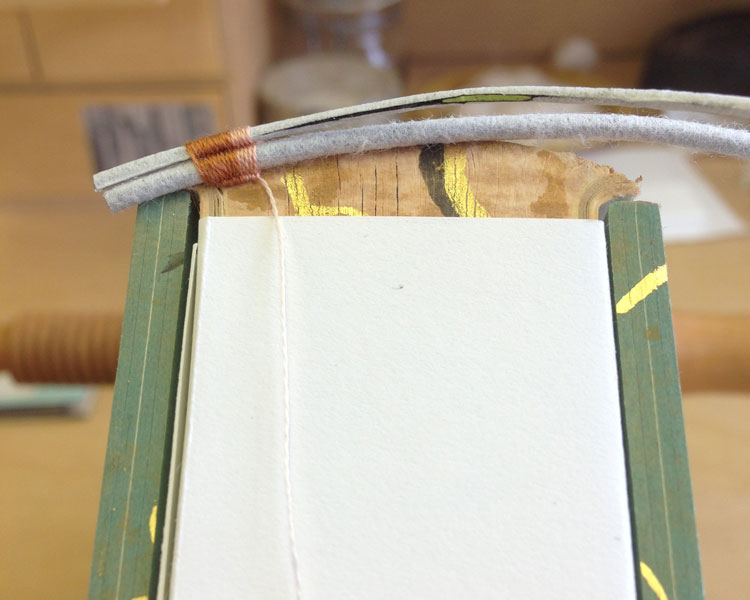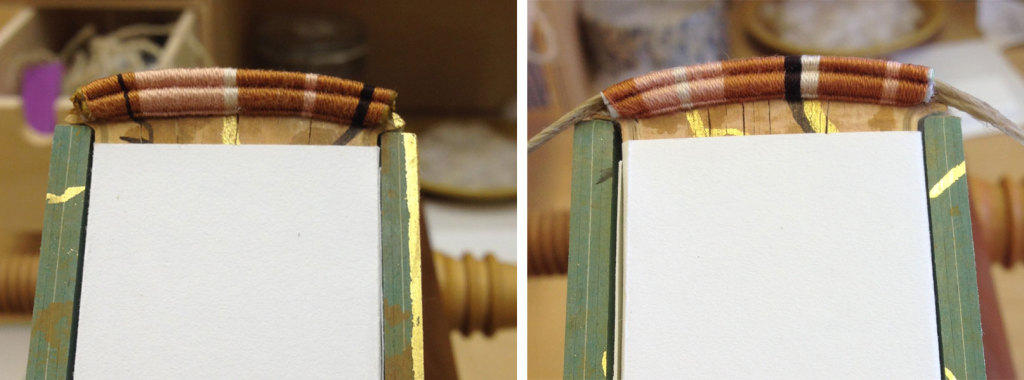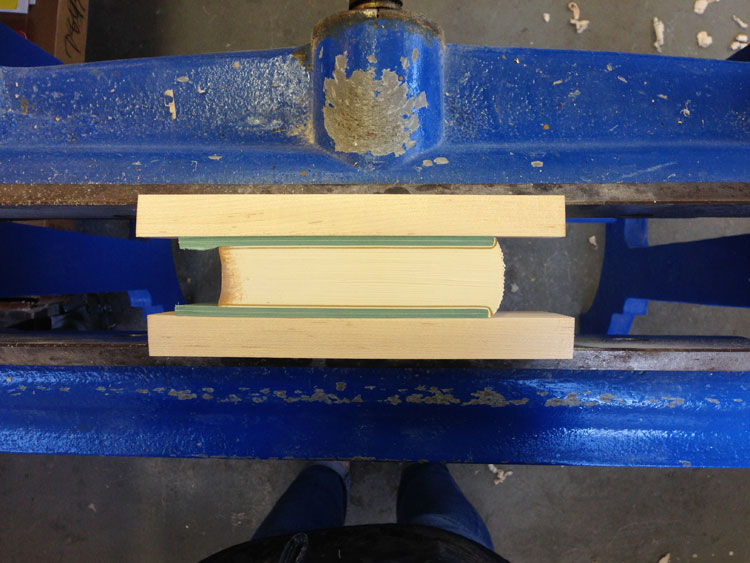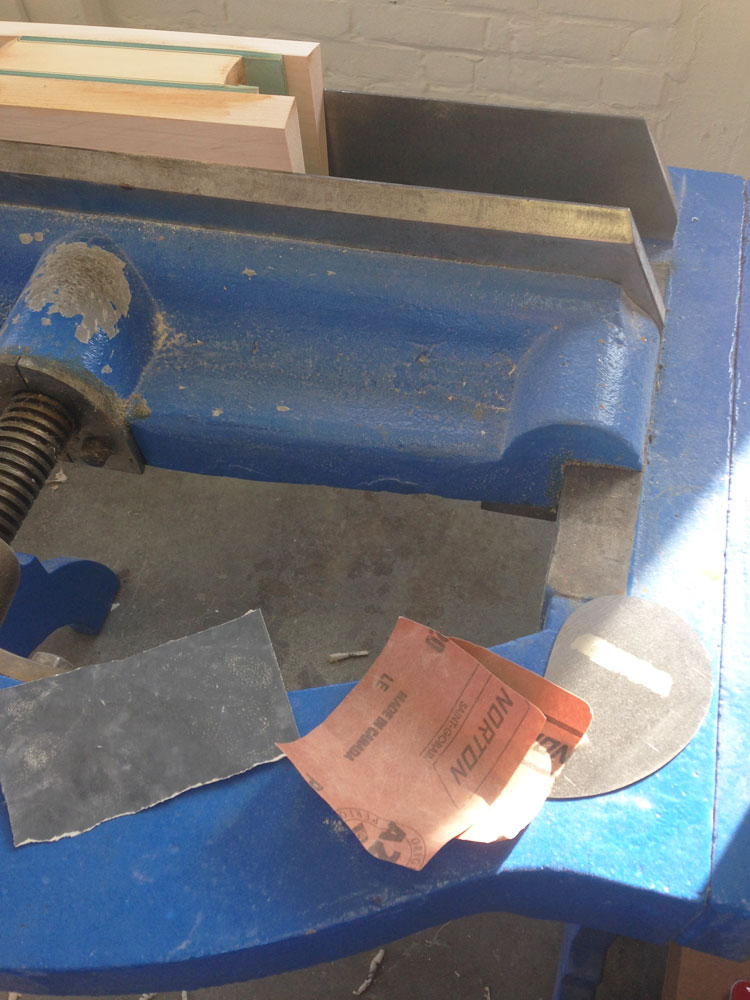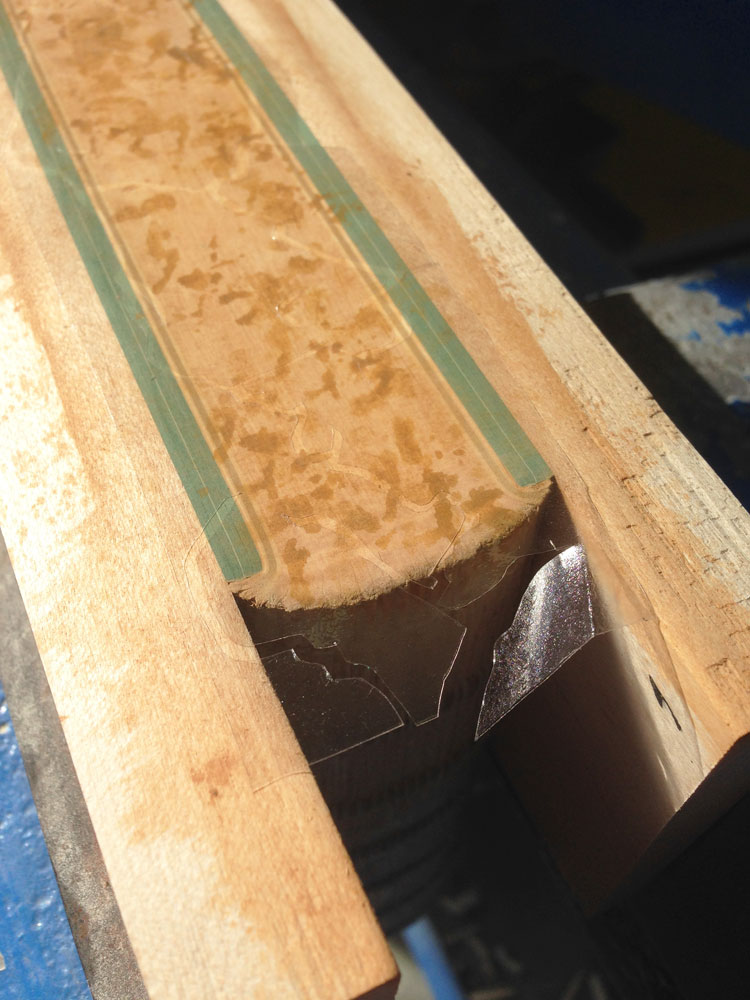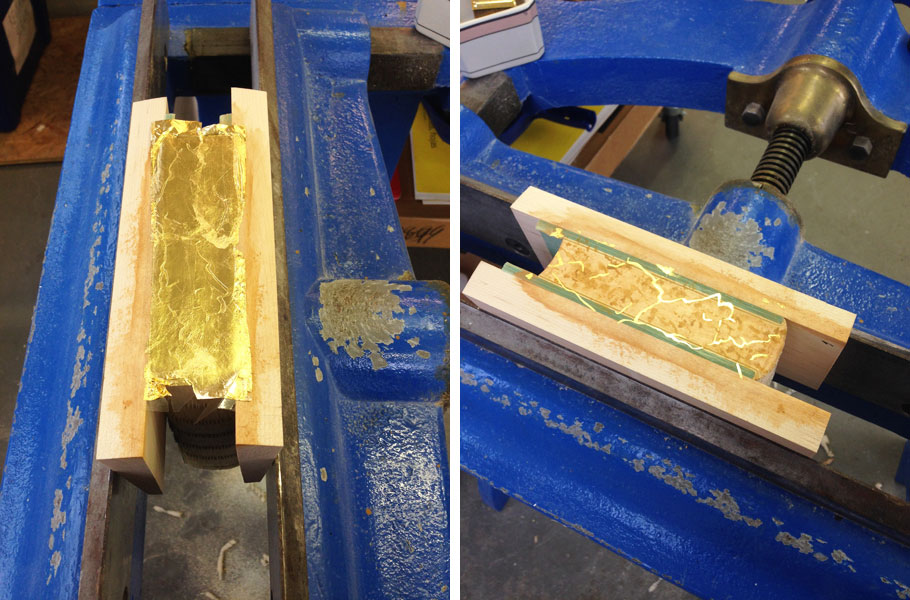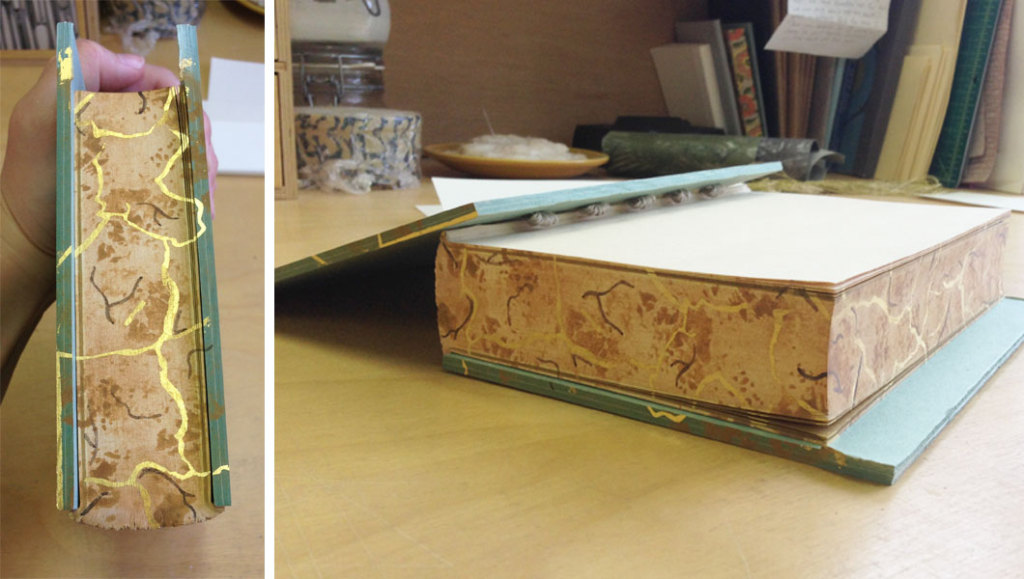After reacquainting myself (with the help of Jane Greenfield and Jenny Hille’s Headbands: How to Work Them) on the techniques for sewing a French double core headband, I embarked on creating the headbands for Dune. The headbands are made up of four different colored threads wrapped around two leather cords of different sizes. A third row of thread is created around a core of thread referred to as the bead. You can see this in the image above, the colored thread is wrapped around the white thread that is dangling in front of the headband. The beading step also locks the tension, keeping everything nice and orderly as you move further along the cord.
Three of the colored threads will be used as embroidered elements on the design of the binding. The dark brown thread was incorporated to extend the dark brown pigment from the edge decoration onto the headband itself. (Click on the image to enlarge).
With the headbands completed, I will be moving forward with the spine linings and board shaping. I foresee a bit of sanding in my future.
